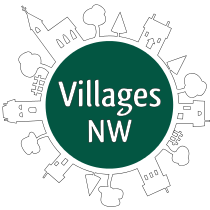From: “Elder Care: Providing For Parents”
By Laura Koss-Feder
“Bostonians Rachel and Tom Claflin wanted to go to California last Christmas to visit three of their children. But what about Tom’s parents, who lived three blocks away and, at 86 and 89, couldn’t manage on their own? No problem. Rachel and Tom were able to take their trip, secure in the knowledge that the elder Claflins had volunteers available to check on them daily, a round-the-clock emergency phone line and access to discounted nursing care, drivers and home repair, among other services.
Both generations of Claflins belong to a “virtual” community called Beacon Hill Village, which has arranged for residents 50 and over in the Beacon Hill, Back Bay and West End sections of Boston to pay a yearly fee to obtain discounts of 10% to 50% on a wide range of care and services. Members also attend regular lunches, classes, concerts and other events. The year-old nonprofit organization, run by a social worker who directs a staff and a network of volunteers, has 150 members. “Even though my in-laws live three blocks away and we help them in a variety of ways, it alleviates some tension to know that they have someone in the neighborhood who can help them out if they need anything,” says Rachel, an artist who helped found the organization and serves on its board. “Novel concepts like Beacon Hill Village can really help people take care of their aging parents.”
______________________________________________________
From “The Village Movement: Redefining Aging in Place”
by Sherri Snelling
“More than 7 million of the 44 million Americans who act as family caregivers for someone over age 50 live at least an hour away from their loved one. These long-distance caregivers face constant worry about how their parents are faring each day, as well as guilt over not being there more often. The Village Movement can ease those concerns. “Baby Boomers are really driving the movement in two ways,” says Candace Baldwin, who oversees the VTV Network for NCB Capital Impact, a national non-profit community development group that supports the village model. “First, they are purchasing the membership for their parents, which gives them peace of mind. Second, they believe this is the model they want for their future housing as they grow older and so they are starting that conversation in their own neighborhoods.”Enrolling parents in a village can also help adult children ease future care transitions. “If you have a mom in a village who has progressive dementia,” Baldwin says, “and it becomes apparent she may need to move to receive more specialized care, the care manager who has been part of the village services can facilitate that conversation more easily because they have known both you and your mom through your mom’s residency.”
______________________________________________________
From “How The Village Movement Helps With Aging Parents”
by Carolyn L. Rosenblatt, AgingParents.com
She has arthritis in her hands and sometimes she can’t get a medication bottle open. She learned to use a computer at age 86 (my husband taught her, God bless him!), but she doesn’t have enough hand strength to press hard enough on the reset button. If the computer freezes, it stays frozen. She feels bad asking her friends, most in their 80′s and 90′s to help with every little thing like this. Alice is not alone in her dilemma. Millions of aging parents live alone and no family is nearby.
In Alice’s desert retirement community, there has always been a list of volunteers who will help their fellow citizens of the community. Now, that willingness to help one another is evolving into a formalized effort to form a “village” modeled after the well respected Beacon Hill village concept, begun in Boston in 2002.
The way it works is that someone organizes the volunteers into specialty areas, like technology help, transportation providers, phone callers to check in on folks, and the like. Other villages have applied for and gotten grants to create programs for administering and screening volunteers as well as vetting other paid service providers.
By pooling resources, creating an administrative post and purchasing services such as handyman or home care as a group, these villages help people stay in their own homes longer. There is a membership fee to cover the cost of keeping programs going. Rates for paid services are negotiated and uniform for village members. Beacon Hill Village created a manual to help others start villages.
For us as distance caregivers, the volunteer list and the village concept are a godsend. We know we can’t be there to help Alice with everything. We love it that there are capable community volunteers Alice might not otherwise know personally who can come over to her house on short notice and provide that service that helps so much.”
